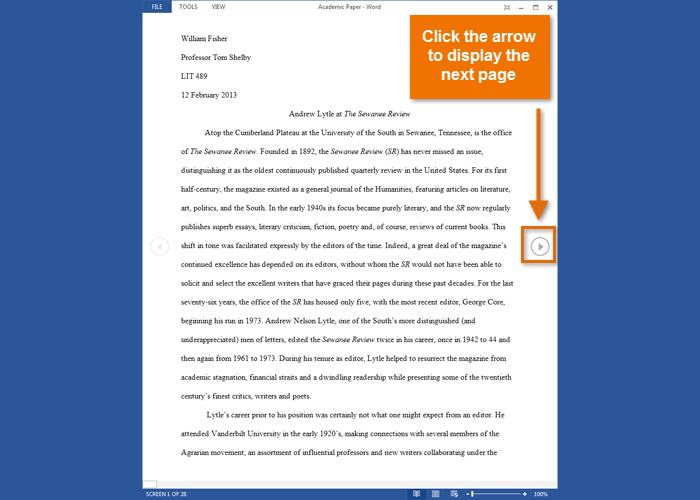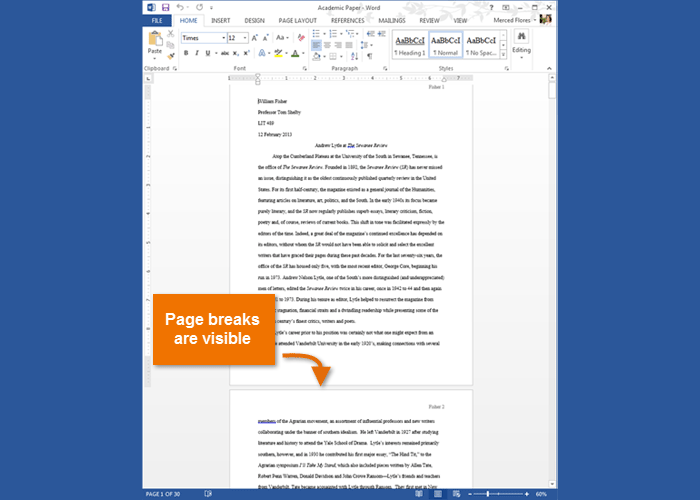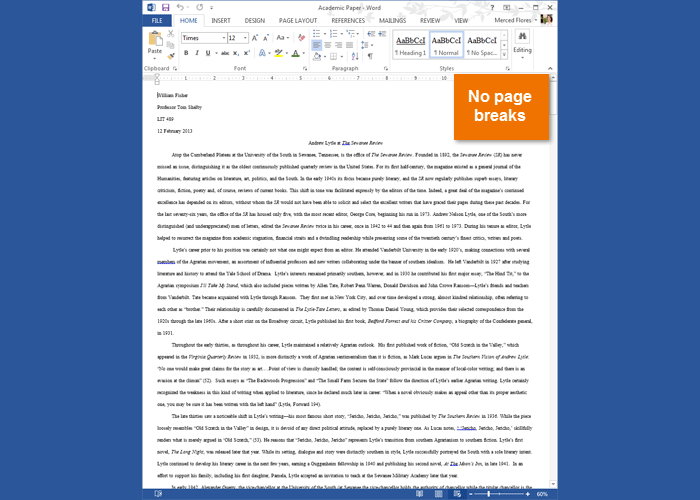
Word 2013
Getting to Know Word
Introduction
Word 2013 is a word processing application that allows you to create a variety of documents like letters, flyers, and reports. With the introduction of several enhanced features—including the ability to create and collaborate on documents online—Word 2013 gives you the ability to do more with your word processing projects.
Getting to know Word 2013
Word 2013 is very similar to Word 2010. If you've previously used Word 2010, then Word 2013 should feel familiar. But if you are new to Word or have more experience with older versions, you should first take some time to become familiar with the Word 2013 interface.
The Word interface
When you open Word 2013 for the first time, the Word Start Screen will appear. From here, you'll be able to create a new document, choose a template, or access your recently edited documents.
- From the Word Start Screen, locate and select Blank document to access the Word interface.
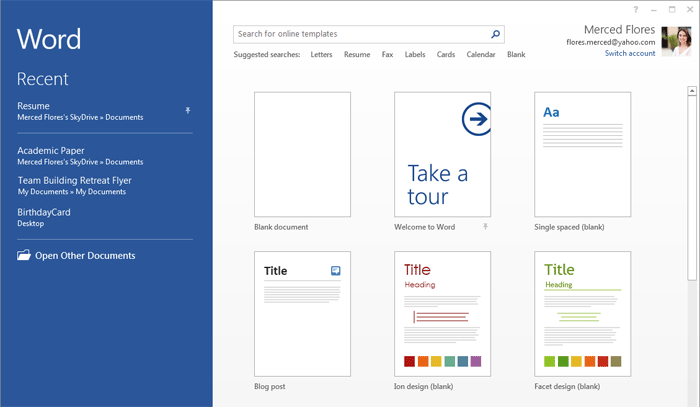 The Word Start Screen
The Word Start Screen
Click the buttons in the interactive below to become familiar with the Word 2013 interface.
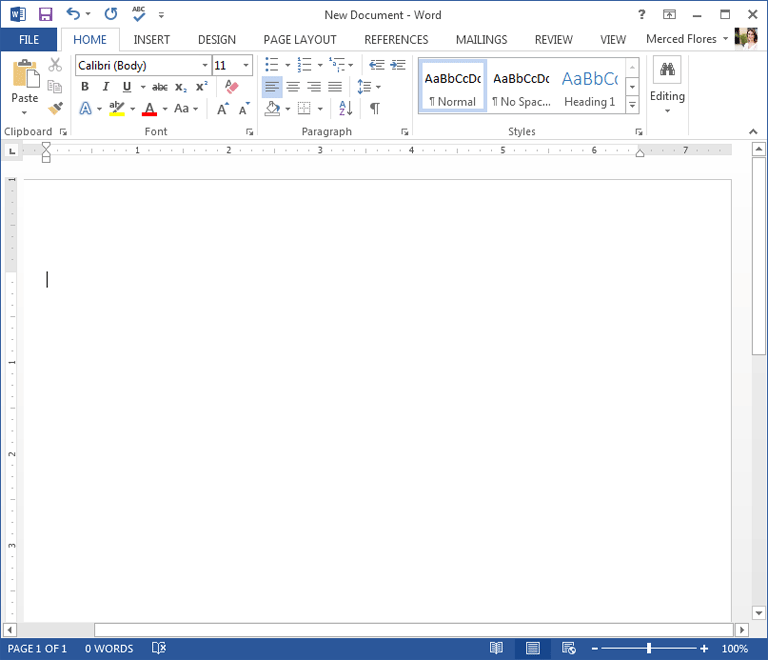
Command Group
Each group contains a series of different commands. Simply click any command to apply it. Some groups also have an arrow in the bottom-right corner, which you can click to see even more commands.
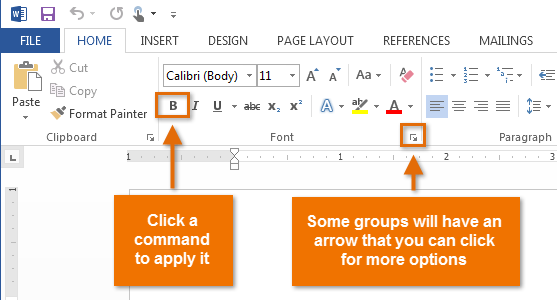
Quick Access Toolbar
The Quick Access Toolbar lets you access common commands no matter which tab is selected.
By default, it includes the Save, Undo, and Repeat commands. You can add other commands depending on your preference.
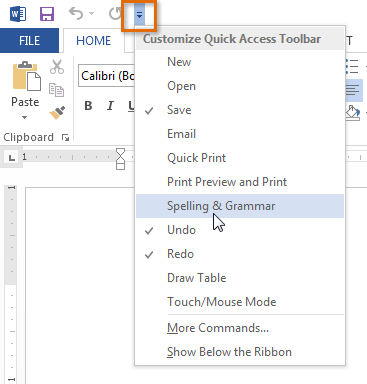
Account Access
From here, you can access your Microsoft Account information, view your profile, and switch accounts.
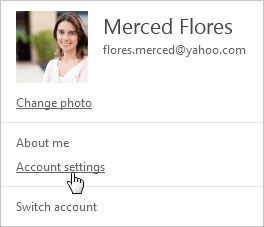
Ruler
The Ruler is located at the top and to the left of your document. It makes it easier to make alignment and spacing adjustments.

Zoom Control
Click, hold and drag the slider to use the Zoom control. The number to the right of the slider bar reflects the zoom percentage.

Document Views
There are three ways to view a document. Simply click to select the desired view:
• Read Mode displays your document in full-screen mode.
• Print Layout is selected by default. It shows the document as it would appear if it were printed.
• Webpage Layout shows how your document would look as a web page.
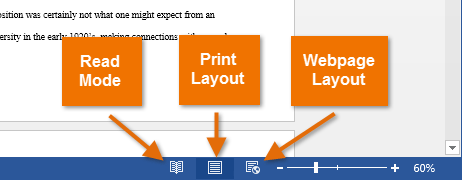
Word Count
Word Count displays the number of words in your document.
Click Word Count to open the Word Count dialog box. Here you can quickly view your document's statistics like the number of pages, paragraphs, and lines.
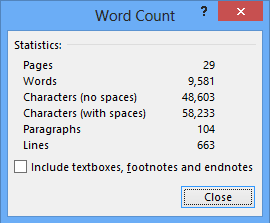
Page Number Indicator
The page number indicator helps you keep track of the number of pages that your document contains.
Click the page number indicator to open the document navigation pane. There, you can search your document by headings or scroll quickly through its pages.
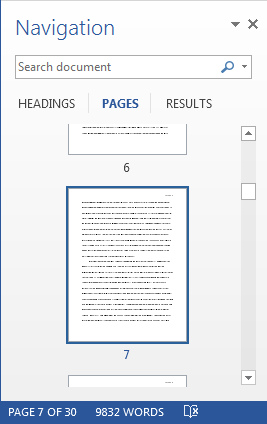
Scroll Bar
Click, hold and drag the scroll bar to scroll up and down through the pages of your document.

The Ribbon
The Ribbon contains all the commands you will need to perform common tasks in Word. It has multiple tabs, each with several groups of commands.
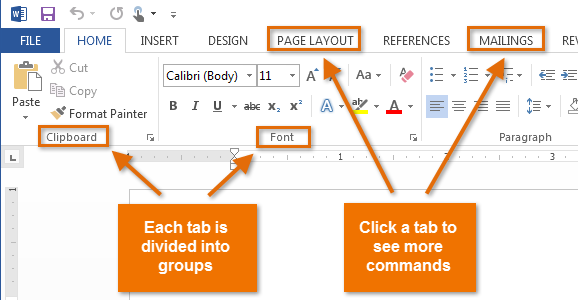
Working with the Word environment
If you've previously used Word 2010 or 2007, then Word 2013 should feel familiar. It continues to use features like the Ribbon and the Quick Access toolbar, where you will find commands to perform common tasks in Word, as well as Backstage view.
The Ribbon
Word 2013 uses a tabbed Ribbon system instead of traditional menus. The Ribbon contains multiple tabs, each with several groups of commands. You will use these tabs to perform the most common tasks in Word.
Click the arrows in the slideshow below to learn more about the different commands available within each tab on the Ribbon.
Certain programs, such as Adobe Acrobat Reader, may install additional tabs to the Ribbon. These tabs are called Add-ins.
To minimize and maximize the Ribbon:
The Ribbon is designed to respond to your current task, but you can choose to minimize the Ribbon if you find that it takes up too much screen space.
- Click the Ribbon Display Options arrow in the upper-right corner of the Ribbon.
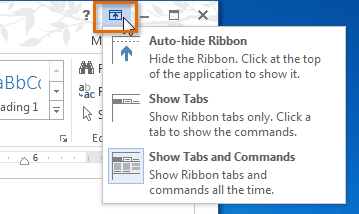 Ribbon Display options
Ribbon Display options - Select the desired minimizing option from the drop-down menu:
- Auto-hide Ribbon: Auto-hide displays your document in full-screen mode and completely hides the Ribbon from view. To show the Ribbon, click the Expand Ribbon command at the top of screen.
 Auto-hiding the Ribbon
Auto-hiding the Ribbon - Show tabs: This option hides all command groups when not in use, but tabs will remain visible. To show the Ribbon, simply click a tab.
 Showing only Ribbon tabs
Showing only Ribbon tabs - Show tabs and commands: This option maximizes the Ribbon. All of the tabs and commands will be visible. This option is selected by default when you open Word for the first time.
- Auto-hide Ribbon: Auto-hide displays your document in full-screen mode and completely hides the Ribbon from view. To show the Ribbon, click the Expand Ribbon command at the top of screen.
To learn how to add custom tabs and commands to the Ribbon, review our Extra on Customizing the Ribbon.
To learn how to use the Ribbon with touch-screen devices, review our Extra on Enabling Touch Mode.
The Quick Access toolbar
Located just above the Ribbon, the Quick Access toolbar lets you access common commands no matter which tab is selected. By default, it shows the Save, Undo, and Repeat commands. You can add other commands depending on your preference.
To add commands to the Quick Access toolbar:
- Click the drop-down arrow to the right of the Quick Access toolbar.
- Select the command you wish to add from the drop-down menu. To choose from more commands, select More Commands.
 Adding a command to the Quick Access toolbar
Adding a command to the Quick Access toolbar - The command will be added to the Quick Access toolbar.
 The added command
The added command
The Ruler
The Ruler is located at the top and to the left of your document. It makes it easier to adjust your document with precision. If you want, you can hide the Ruler to create more screen space.
 The Ruler
The RulerTo show or hide the Ruler:
- Click the View tab.
- Click the check box next to Ruler to show
 or hide
or hide  the ruler.
the ruler.
 Hiding the Ruler
Hiding the Ruler
Backstage view
Backstage view gives you various options for saving, opening a file, printing, and sharing your document.
To access Backstage view:
- Click the File tab on the Ribbon. Backstage view will appear.
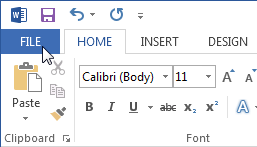 Clicking the File tab
Clicking the File tab
Click the buttons in the interactive below to learn more about using Backstage view.
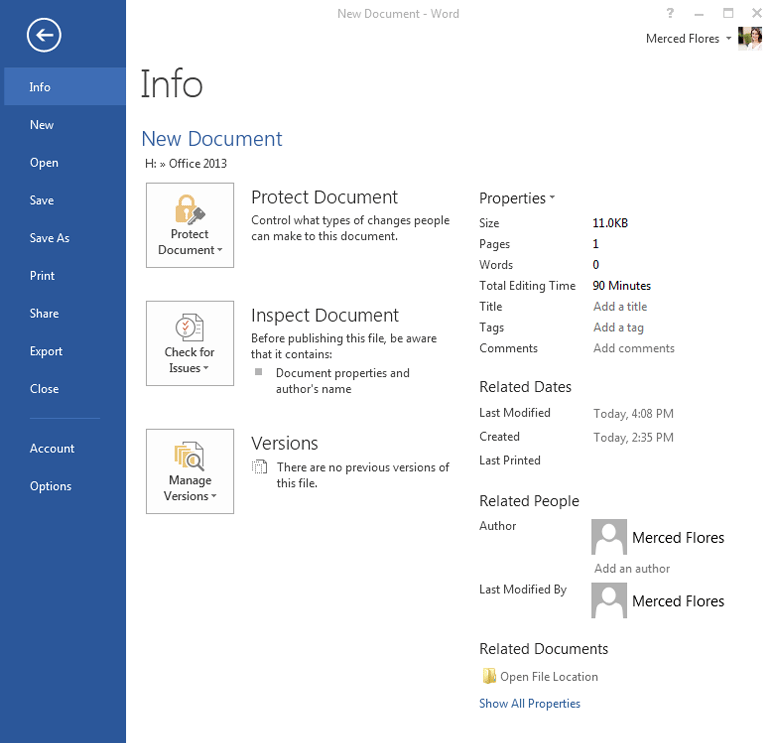
Options
Here you can change various Word options. For example, you can control the spelling and grammar check settings, AutoRecover settings, or Language preferences.
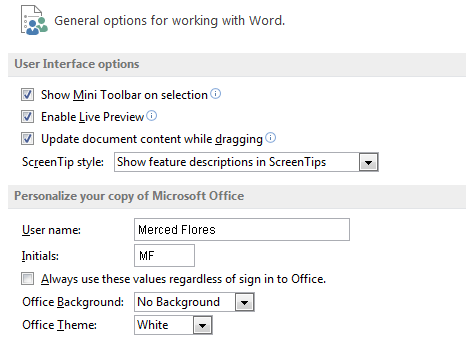
Account
From the Account pane, you can access your Microsoft account information, modify your theme and background, and sign out of your account.
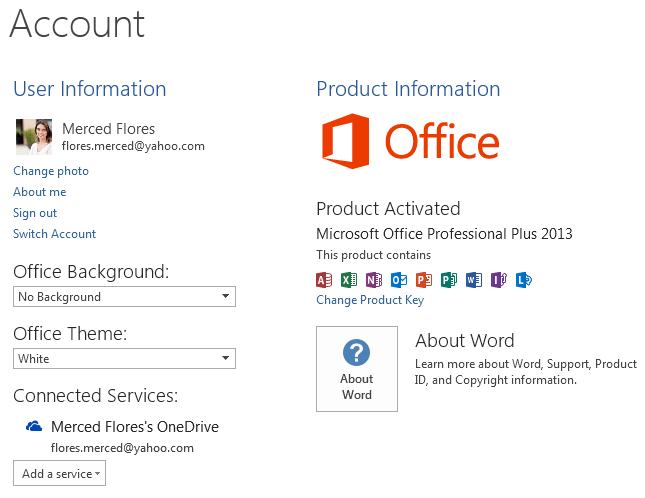
Export
You can choose to export your document in another format, such as PDF/XPS.

Share
From here, you can invite people connected to OneDrive to view and collaborate on your document. You can also share your document by emailing it, presenting it online, or posting it to your blog.
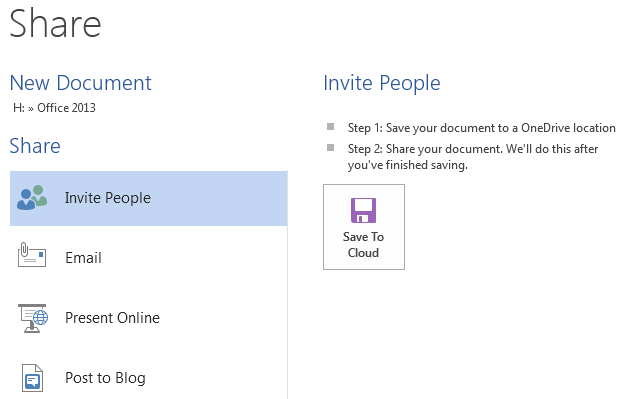
From the Print pane, you can change the print settings and print your document. You can also see a preview of your document.
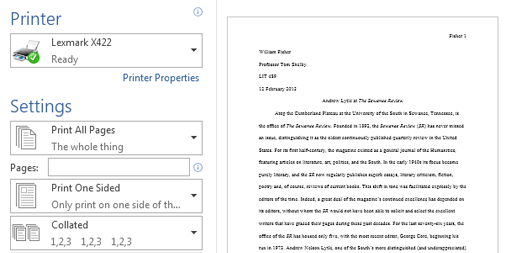
Save and Save As
Use Save and Save As to save your document to your computer or to your OneDrive.
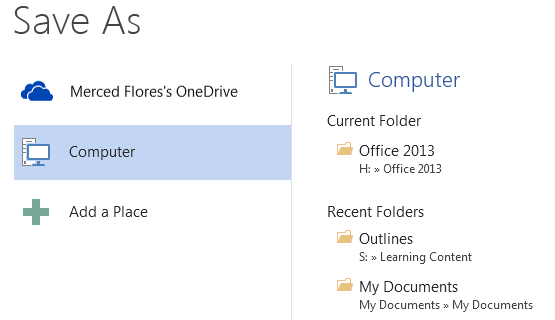
Open
From here, you can open recent documents, as well as documents saved to your OneDrive or on your computer.
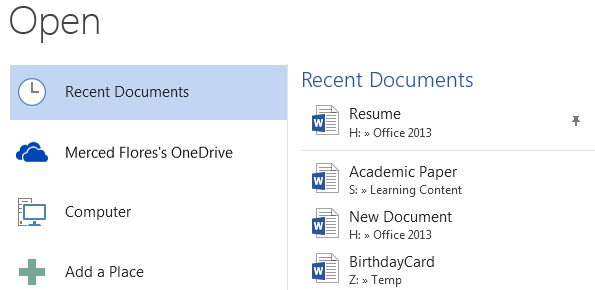
New
From here, you can create a new, blank document, or you can choose from a large selection of templates.
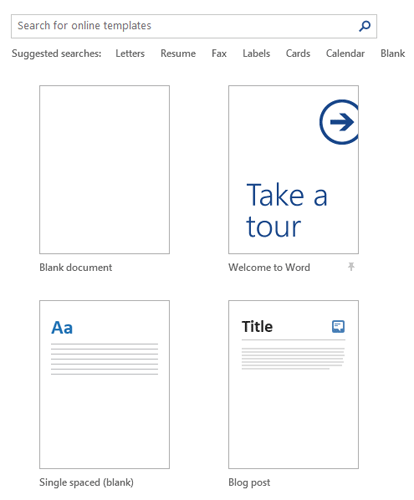
Info
The information pane will appear whenever you access Backstage view.
It contains information about the current document. You can also inspect the document and set protection controls
Return to Word
You can use the arrow to close Backstage view and return to Word.
Close
Click here to close the current document.
Document views
Word 2013 has a variety of viewing options that change how your document is displayed. You can choose to view your document in Read Mode, Print Layout, or Web Layout. These views can be useful for various tasks, especially if you're planning to print the document.
- To change document views, locate and select the desired document view command in the bottom-right corner of the Word window.
 Document view options
Document view options
Click the arrows in the slideshow below to review the different document view options.
If your document has many pages, Word 2013 has a handy new feature called Resume Reading that allows you to open your document to the last page you were viewing. When opening a saved document, look for the bookmark icon to appear on the screen. Hover the mouse over the bookmark, and Word will ask if you want to pick up where you left off.
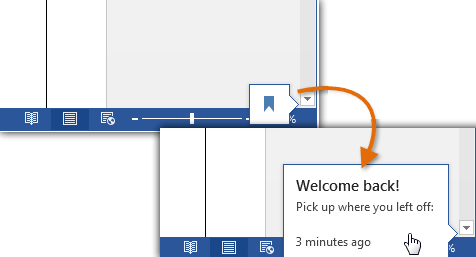 Resume Reading
Resume ReadingChallenge!
- Open or navigate to the Word 2013 interface.
- Click through all of the tabs, and review the commands on the Ribbon.
- Try minimizing and maximizing the Ribbon.
- Add a command to the Quick Access toolbar.
- Hide and show the Ruler.
- Navigate to Backstage view, and open your Account settings.
- Try switching document views.
- Close Word (you do not have to save the document).










